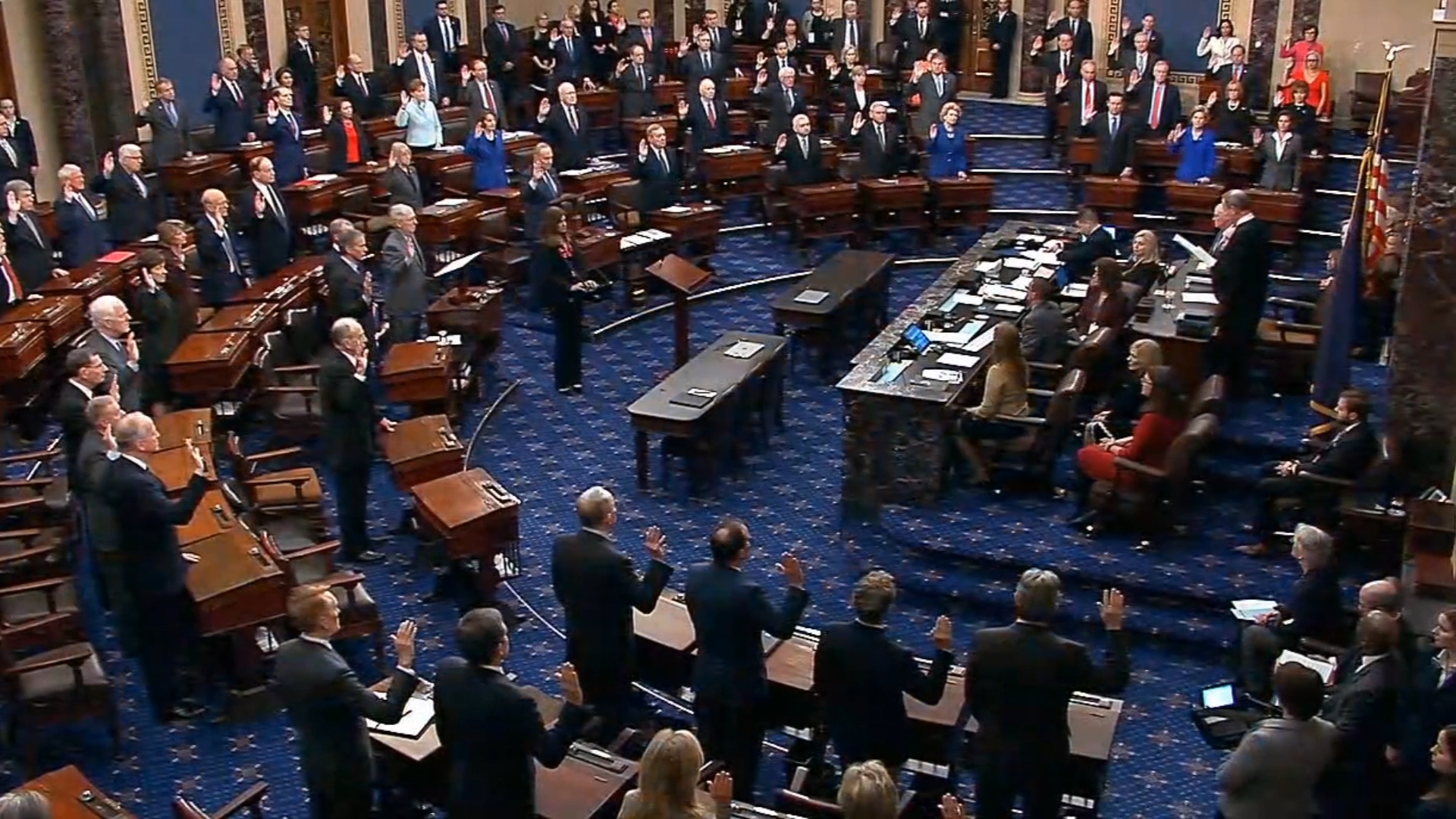With Iowa and New Hampshire still up in the air, Democratic race has 2016 echoes
Once impeachment is done, Democrats will have to deal with their divisions

ANALYSIS — Sometime soon, the impeachment trial of Donald John Trump will likely end and the Senate, notwithstanding who might get called as a witness, will acquit him.
The president, of course, will claim victory and, having escaped punishment, will presumably return to doing what he has been doing for months — looking for ways to discredit Democrats, even if it involves help from foreign governments. The rest of us will also jump quickly from impeachment and back to the presidential race, hardly missing a beat.
That means Iowa and New Hampshire. As I have been arguing for months, the early national polls were essentially meaningless.
Iowa will scramble the overall Democratic contest, since the fallout from caucuses will affect New Hampshire, fundraising, media coverage and the narrative about who is ahead nationally.
Up in the air
Given the wildly conflicting polls (and the difficulty in polling caucus attendees), we still can’t be certain who’ll win Iowa, what the order of finish will be or what the margins between candidates will look like.
So there is a lot up in the air.
On the other hand, the shape of the Democratic contest continues to look a good deal like 2016, though the current field is much larger than the two-person contest of four years ago.
Then, populist progressive Bernie Sanders and Hillary Clinton, who had support from much of the party leadership and establishment, finished in a virtual dead heat in Iowa.
Clinton drew 49.8 percent of attendees, while the Vermont senator drew 49.6 percent. She won 23 delegates to Sanders’ 21.
This cycle, the Jan. 20-23 New York Times/Siena College poll found the two populist progressives, Sanders (25 percent) and Massachusetts Sen. Elizabeth Warren (15 percent), drawing a combined 40 percent in Iowa, while the three “pragmatists” in the contest, former Vice President Joe Biden (17 percent), former South Bend, Indiana, Mayor Pete Buttigieg (18 percent) and Minnesota Sen. Amy Klobuchar (8 percent), combined for 43 percent.
Biden, Buttigieg and Klobuchar actually are mainstream Democrats who generally hold liberal views but preach working together across the aisle, electability and the benefits of caution, which separates them from Sanders and Warren, who preach fundamental, structural change and never talk about the need to compromise.
So the divide in the state between the Democratic Party’s two wings echoes the conflict from four years ago.
Of course, the race could change over the next week, and how supporters of the candidates who don’t hit the 15 percent threshold behave during the caucuses could well determine who “wins” and what the various margins look like.
Members of the media tend to look for “winners” and “losers” in contests, so candidates failing to meet expectations will suddenly find themselves in a media feeding frenzy.
They will have to spend time explaining their performance and prospects instead of talking about health care, the environment and guns.
A Sanders sweep?
Four years ago, Sanders followed up his surprising showing in Iowa by beating Clinton rather soundly in New Hampshire, 60 percent to 38 percent. He earned 15 delegates to her 9.
Of course, New Hampshire voters always seem to enjoy being quirky, and Sanders benefited from geography (being from neighboring Vermont) and the fact that the Granite State allows independents to participate in either primary.
This year, Warren is also from a neighboring state, and other candidates (such as Buttigieg), could benefit from the state’s interest in new candidates.
The new NBC News/Marist poll from New Hampshire shows Sanders leading the field with 22 percent to Buttigieg’s 17 percent. Those results, along with Iowa’s, have journalists talking about Sanders’ “surge.”
But while Sanders leads in polls, he is nowhere near his showings of four years ago. (Readers beware: Journalists like to find “surging” candidates.)
While a Sanders sweep of Iowa and New Hampshire would give him momentum, help his fundraising and cause party pragmatists to start pulling their hair out, it wouldn’t put him in a very different place than he was four years ago. (Of course, the lack of a large bloc of superdelegates this time benefits the Vermont progressive.)
The next two contests in 2016 were won by Clinton, who bested Sanders narrowly in Nevada (53 percent to 47 percent) but clobbered him in South Carolina (73 percent to 26 percent.)
This year, party strategists continue to believe that Biden’s strength in the African American community is unassailable, making South Carolina the former vice president’s firewall. But will that firewall hold if Biden underperforms in the first two or three contests? Wouldn’t both black and white voters start looking for alternatives if Biden were to finish third or even worse in Iowa and New Hampshire?
And then there is Michael Bloomberg. He remains a curious contender who aims to jump-start his campaign on Super Tuesday’s March 3 contests. But his rationale continues to be based on Biden failing, and he continues to assume Democrats will embrace a billionaire businessman.
The greatest danger for each of the party’s two wings is for the opposition to unite around one candidate while it finds itself divided among two or three contenders.
For example, what if Biden, Buttigieg and Bloomberg are fighting it out in late March for the “pragmatic” lane, while Sanders emerges as the standard-bearer of all progressives? That would surely advantage the Vermonter.
While polls suggest Democrats care more about beating Trump in November than having a nominee who matches their views, the fight between the two wings of the party could last for some time, possibly even until the Democratic National Convention in July. Obviously, the longer the battle, the greater chance for animosity, which would benefit only one person — Donald Trump.





